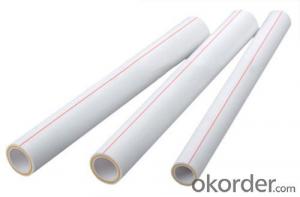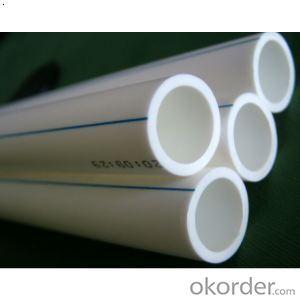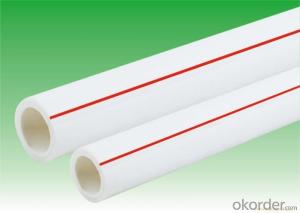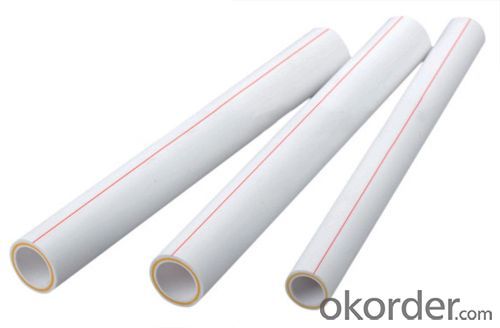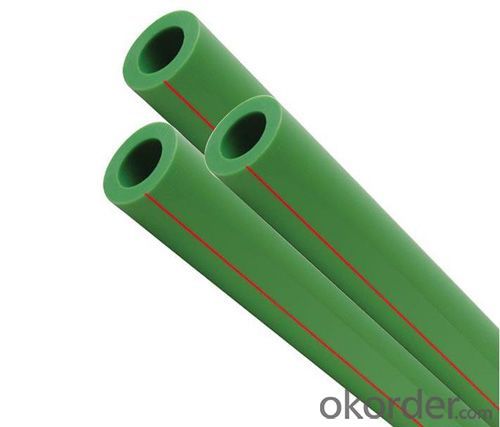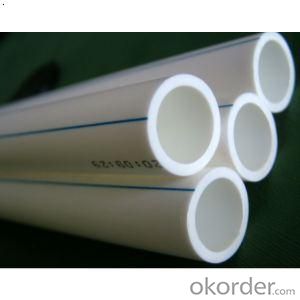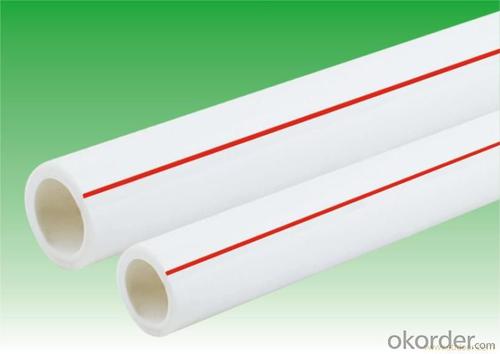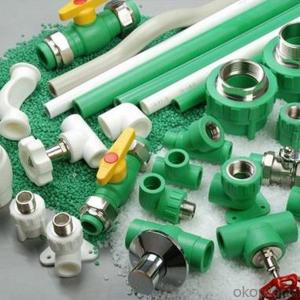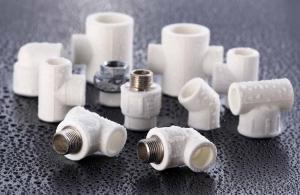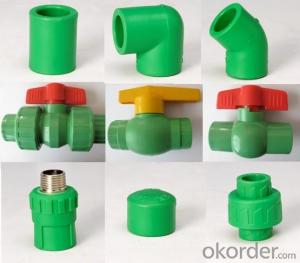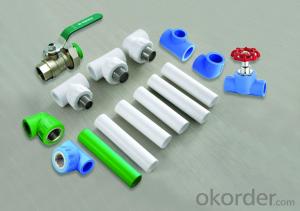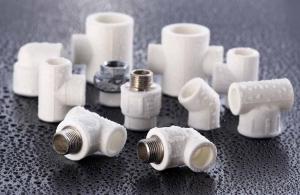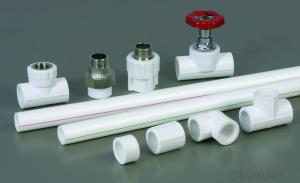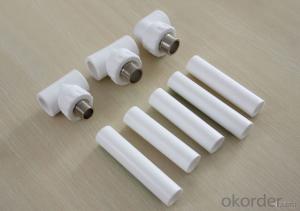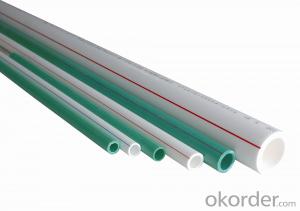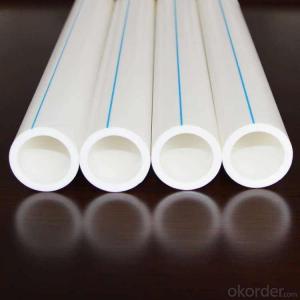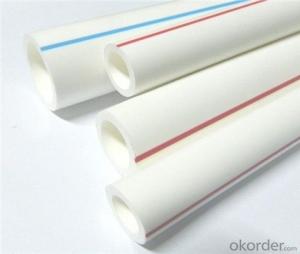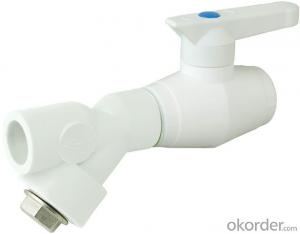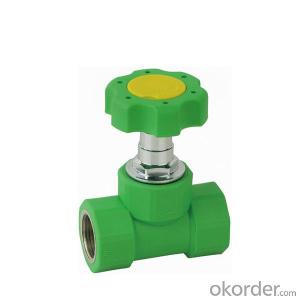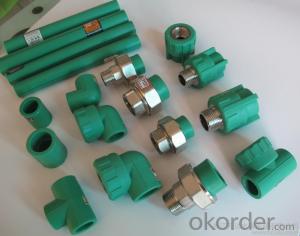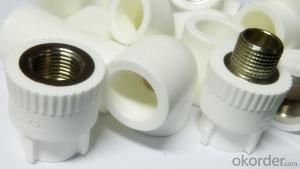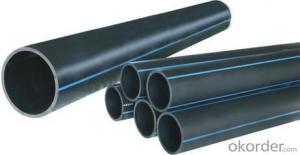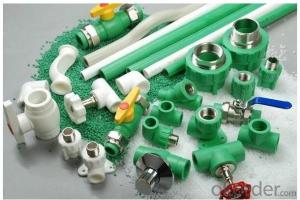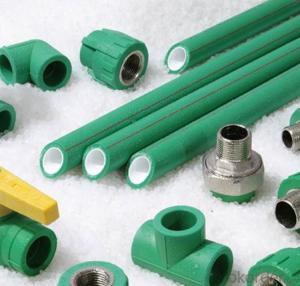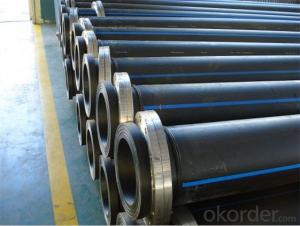Best Plastic Pipe Fittings for Household Appliances PPR Pipes with Popular Sale
- Loading Port:
- Qingdao
- Payment Terms:
- TT OR LC
- Min Order Qty:
- 1000 pc
- Supply Capability:
- 100000 pc/month
OKorder Service Pledge
OKorder Financial Service
You Might Also Like
Introduction of Our Products:
The comprehensive technical performance and economic indicator of PP-R are much better than galvanized pipe, UPVC pipe, polyethylene-aluminum compound pipe, PE-X (cross-linked polyethylene) and polybutylene pipe etc. For this reason PP-R is the leading products and widely used for feed-water piping in developed countries in Europe and America.
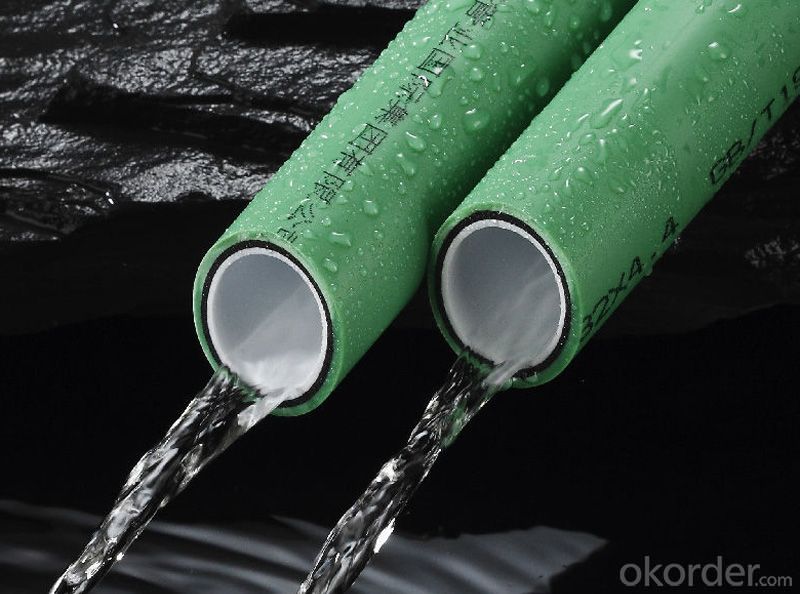
Applications PPR Pipe :
1) Cold and hot water supply systems for civil and industrial constructions, e.g. in residential buildings, hospitals, hotels, school and office buildings, ship building
Irrigating system for gardens and green houses
2) Public and sport facilities such as swimming pools and stadiums
3) For rainwater utilization systems.
Specifications:
Standard: DIN8077/8078
Material: R200P from Korea
Size: 20-160MM
Color: Green, White, Grey, Blue
Packaging & Delivery
Packaging Details: PE bag + carton
Delivery Detail: 15 Days
Size:
Normal Sizes for CNBM PPR Pipe | |||||
Outside Diameter(mm) | Wall Thickness(mm) | Package(m/bale) | |||
S5 PN1.25MPa | S4 PN1.6MPa | S3.2 PN2.0MPa | S2.5 PN2.5MPa | ||
20 | 2 | 2.3 | 2.8 | 3.4 | 120 |
25 | 2.3 | 2.8 | 3.5 | 4.2 | 120 |
32 | 2.9 | 3.6 | 4.4 | 5.4 | 80 |
40 | 3.7 | 4.5 | 5.5 | 6.7 | 60 |
50 | 4.6 | 5.6 | 6.9 | 8.3 | 40 |
63 | 5.8 | 7.1 | 8.6 | 10.5 | 24 |
75 | 6.8 | 8.4 | 10.1 | 12.5 | 16 |
- Q: Are plastic pipe fittings resistant to pressure?
- Yes, plastic pipe fittings are generally resistant to pressure. They are designed to withstand the pressure levels typically found in plumbing and fluid transfer systems. However, the level of resistance may vary depending on the specific type and quality of the fitting, as well as the application and operating conditions.
- Q: Can plastic pipe fittings be used for water treatment systems?
- Yes, plastic pipe fittings can be used for water treatment systems. They are commonly used due to their corrosion resistance, durability, and ease of installation. However, it is important to ensure that the plastic material used is compatible with the specific water treatment chemicals and processes being employed.
- Q: How do you remove a plastic pipe fitting?
- To remove a plastic pipe fitting, you can follow these steps: 1. Turn off the water supply: Before removing any pipe fitting, it is essential to turn off the water supply to prevent any leaks or accidents. 2. Prepare the area: Clear the surrounding area of any obstructions or debris that may hinder your work. 3. Identify the type of fitting: Determine the type of plastic fitting you are dealing with. Common types include compression fittings, push-to-connect fittings, or threaded fittings. 4. Compression fittings: For compression fittings, you will need two adjustable wrenches. Use one wrench to hold the fitting in place while using the other wrench to turn the nut counterclockwise until it comes off. 5. Push-to-connect fittings: Push-to-connect fittings typically have a release mechanism built into them. Locate the release collar near the fitting, then push it down firmly towards the pipe while pulling the pipe away from the fitting. This will release the connection. 6. Threaded fittings: Threaded fittings require the use of a pipe wrench or adjustable wrench. Place the wrench on the fitting's body or hex section and turn it counterclockwise to loosen and remove the fitting. 7. Inspect and clean: Once the fitting is removed, inspect the pipe and fitting for any damage or debris. Clean the pipe end and the inside of the fitting to ensure a proper connection when reinstalling it or replacing it with a new fitting. Remember to exercise caution and follow safety guidelines when working with plumbing systems. If you are unsure or encounter any difficulties, it is advisable to consult a professional plumber.
- Q: Antistatic flame retardant PE plastic pipe installation, what should pay attention to?
- When installing the pipe, the distance between the two socket flexible connections shall be no more than 3 meters. When the length compensation is needed, the pipe can be completely inserted into the socket and then out of the 10mm. Flexible connections between pipes and fittings can absorb thermal expansion of pipes up to 10mm.
- Q: How do plastic pipe fittings compare to brass fittings?
- Plastic pipe fittings are generally more affordable and easier to install compared to brass fittings. However, brass fittings are known for their durability, strength, and resistance to high temperatures and pressure. They are also less likely to leak or crack over time. Ultimately, the choice between plastic and brass fittings depends on the specific needs and requirements of the plumbing system.
- Q: Are plastic pipe fittings recyclable?
- Yes, plastic pipe fittings are generally recyclable. However, it is important to check with local recycling facilities or waste management authorities to ensure they accept these items for recycling.
- Q: Can plastic pipe fittings be used in agricultural applications?
- Yes, plastic pipe fittings can be used in agricultural applications. They are commonly utilized for irrigation systems, water supply lines, and drainage systems in agricultural settings because of their durability, resistance to chemicals, and ease of installation.
- Q: Can plastic pipe fittings be used for chemical processing?
- Plastic pipe fittings can be used for chemical processing, depending on the specific type of plastic and the chemicals being processed. Some plastics, such as PVC or CPVC, are commonly used for handling various chemicals in industrial applications. However, it is important to consider the compatibility of the plastic material with the specific chemicals involved, as certain chemicals may react with or degrade certain types of plastics. Chemical resistance charts and expert advice should be consulted to ensure the suitability of plastic pipe fittings for a particular chemical processing application.
- Q: Are plastic pipe fittings suitable for use in dairy farms?
- Yes, plastic pipe fittings are suitable for use in dairy farms. They are commonly used due to their durability, chemical resistance, and ease of installation. Plastic fittings are also more cost-effective compared to traditional metal fittings, making them a popular choice for various applications in dairy farms.
- Q: How do plastic pipe fittings handle extreme weather conditions?
- Plastic pipe fittings generally fare well in extreme weather conditions due to their durability and resistance to temperature fluctuations. They have the ability to withstand freezing temperatures, high heat, and even harsh UV rays without cracking or deteriorating. Additionally, plastic pipe fittings are often designed with weather-resistant properties, such as UV stabilizers or special coatings, which further enhance their ability to handle extreme weather conditions.
Send your message to us
Best Plastic Pipe Fittings for Household Appliances PPR Pipes with Popular Sale
- Loading Port:
- Qingdao
- Payment Terms:
- TT OR LC
- Min Order Qty:
- 1000 pc
- Supply Capability:
- 100000 pc/month
OKorder Service Pledge
OKorder Financial Service
Similar products
Hot products
Hot Searches
Related keywords
